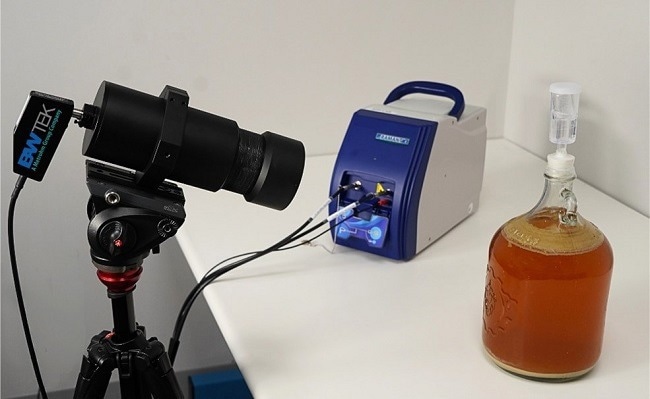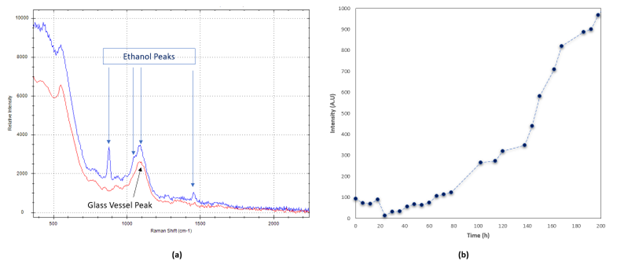Sponsored Content by Metrohm AGReviewed by Olivia FrostMay 20 2024
Biotechnology has had a significant influence on modern society. For instance, genetically modified microbes are employed to manufacture human hormones such as insulin, while yeast has been utilized for thousands of years to make alcoholic beverages and other fermentation items. In addition, wastewater is biologically treated before being released back into the environment.
To guarantee the safety and quality of a finished product and the proper operation of a bioreactor, contamination must be avoided, and ideal growth settings must be provided for the microorganisms involved.
This involves observing different factors such as temperature, substrates, dissolved gases, and pH. However, repeated sampling can disturb the process and raise the possibility of contamination.
Raman spectroscopy is a non-destructive and non-invasive technique, providing a superior alternative to traditional process-monitoring methods that typically involve sampling. This method offers real-time insights into the state of the bioreactor.
A previous article successfully demonstrated how the fermentation process is monitored with an i-Raman EX, a 1064 nm laser laboratory device, using RIS101 Sapphire Ball Immersion Shaft.
However, this article will discuss the steps involved in performing non-invasive, stand-off observation of the brewing procedure using an RTS202 Stand-off lens (Figure 1). This enables the collection of real-time data on the state of the bioreactor without any danger of disruption or contamination.

Figure 1. i-Raman EX coupled to an RTS202 stand-off lens. Image Credit: Metrohm AG
Figure 2 displays the raw Raman spectra of beer during the first nine days of fermentation. Despite minor interference from the glass vessel, which can be minimized by using materials with lower Raman activity, the ethanol bands at 876, 1040, 1090, and 1455 cm-1 are clearly discernible (Figure 2a).
By monitoring the intensity of the 876 cm-1 band, it is possible to track the increase in ethanol concentration in the brew throughout the fermentation process in a non-contact and non-invasive manner (Figure 2b).

Figure 2. Raman spectra of the brew the start (red) and after 200h into the fermentation process (a) and relative intensity of the 876 cm-1 band at different phase of the fermentation process (b). Image Credit: Metrohm AG
About Metrohm AG
Metrohm is one of the world’s most trusted manufacturers of high-precision instruments for chemical analysis. Metrohm was founded in 1943 by engineer Bertold Suhner in Herisau, Switzerland. Today, Metrohm is represented in 120 countries by subsidiaries and exclusive distributors. The global Metrohm Group also includes the Dutch companies Metrohm Applikon and Metrohm Autolab, manufacturers of online analyzers and instruments for electrochemical research, respectively. Recently, the Metrohm Group was joined by Metrohm Raman, a leading manufacturer of handheld Raman spectrometers.
Metrohm is the global market leader in analytical instruments for titration. Instruments for ion chromatography, voltammetry, conductivity, and stability measurement make the Metrohm portfolio for ion analysis complete. Instruments for Near-infrared and Raman spectroscopy are another, strongly growing segment of the Metrohm portfolio.
Metrohm is a problem solver, both in the laboratory and within the industrial process. To this end, the company offers their customers complete solutions, including dedicated analytical instrumentation as well as comprehensive application know-how. More than 30% of the company’s employees at the Metrohm international headquarters in Herisau work in R&D.
Metrohm has been owned 100% by the non-profit Metrohm Foundation since 1982. The Metrohm Foundation, which does not exert any influence on the company’s business operations, sponsors gifted students in the natural sciences, supports charitable and philanthropic purposes and, above all, ensures the independence of the company.
Sponsored Content Policy: News-Medical.net publishes articles and related content that may be derived from sources where we have existing commercial relationships, provided such content adds value to the core editorial ethos of News-Medical.Net which is to educate and inform site visitors interested in medical research, science, medical devices and treatments.